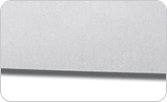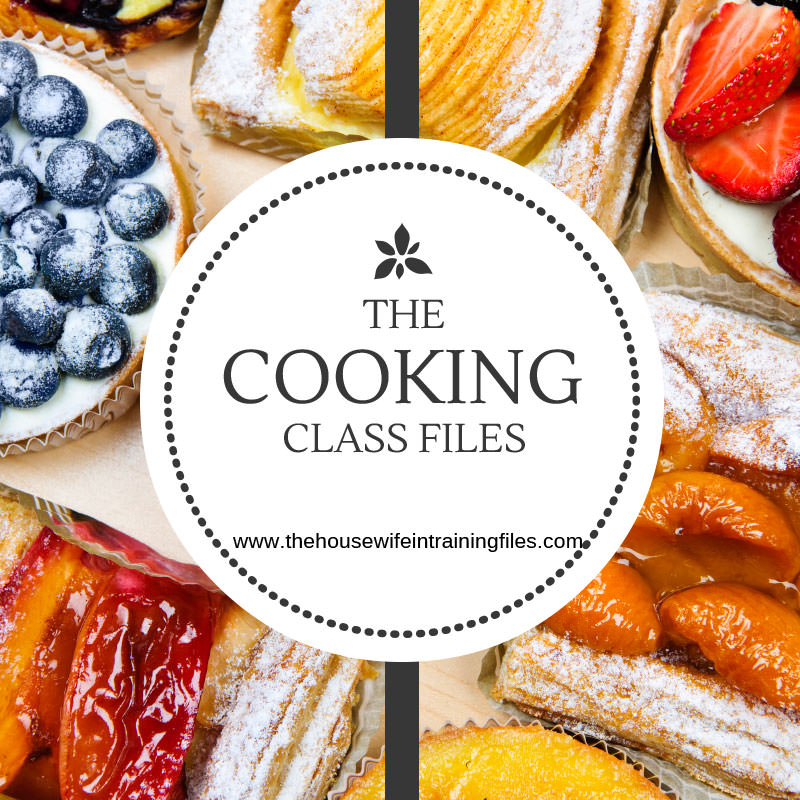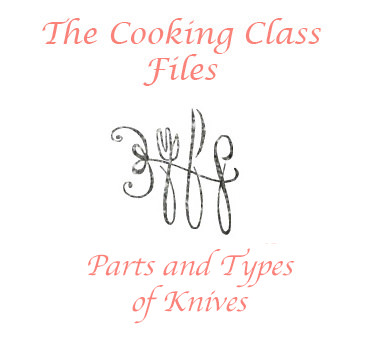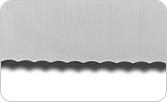Welcome back to another session of The Cooking Class Files!
Over the past few weeks we have discussed common cooking terms and the five basic Mother Sauces that are the cornerstone of French cooking, but what in world is with all the different types of knives that are found in the kitchen?
How does one decide on which knife to use when chopping herbs to what knife to use when carving a turkey?!
Well let’s first discuss the anatomy of the knife first.
- Point | Tip – The point is front sharp part of the knife that is opposite of the handle. It is sharp, pointy and thin. The point can be used for cutting food into thin strips, cutting small items, carving and can also be used for making small incisions, such as scoring the skin on a chicken breast to making slits in the sides of pork chips where stuffing or fillings would be added.
- Edge – The bottom, sharp edge of the knife that runs from heel to tip. It is very sharp and be straight cut or serrated. The edge is used to cut, chop and slice foods. Keeping the edge sharp is critical to maintaining safety and maximum efficiency. Just remember a sharp knife is safer than a dull blade duh to the pressure that will be applied. Think about cutting an apple with a sharp knife will require less pressure than with a dull blade!
- Spine – The spine is the opposite side of the knife than the edge. Since it is thicker than the edge, it adds strength to the blade. It has a smooth, blunt edge to allow the user to grip it with thumb and forefinger or to be able to apply pressure with fingers or the palm of a hand to add control to the task being performed.
- Heel – The last two inches of the blade that is opposite of the tip and is typically used to cut thick or tough products where more force is required.
- Bolster – A thick piece of metal (collar essentially) that is at the end of the blade, just before the handle. It provides a resting place for the fingers to rest and helps to balance the knife and prevents the user’s hand from slipping across the blade.
- Tang – This is the metal part of the blade that extends into the handle and helps provide strength and balance. It is ideal to find a knife with a full tang blade, where the tang runs to the end of the handle. These are considered superior in balance and durability.
- Handle – The handle holds the knives blade and has a gripping surface where the user will hold onto. It is key to make sure the handle is comfortable in your hand before purchasing as it can cause inefficient use along with safety issues.
- Butt – The opposite end of the tip. Sometimes the butt of the knife is used to tenderize or grind ingredients so it is important that the butt is of stable construction.
Now that you know your way around a knife, let’s discuss a few different types of knives and their ideal uses.
- Chef’s Knife – An all-purpose knife that is used for most types of chopping, dicing, mincing, and slicing. Chef’s knives come in various lengths of 6, 8, 10, and 12 inches. The heft, weight and balance of this knife allow it to be used for heavy-duty work with thicker cuts of vegetables, fruits and meats. The length of the knife you purchase is significant. The longer the knife, the heavier and more difficult it will be to handle. Small handed cooks should choose shorter blades while cooks with larger hands will prefer longer blades. Chef’s knives will have a straight edge.

- Pairing Knife – A smaller knife that is ideal for peeling fruits and vegetables, removing corn from the cob, chopping up large heads of lettuce. The pairing knife rates second to the chef’s knife as it is versatile.
- Meat Carving Knife – Used to cut thin slices of meat, such as turkey, chicken, hams and other large pieces of meat. They are much thinning than a chef’s knife to allow for thinner, more precious slices of meat.
- Serrated Knife – Knife with wavy or scalloped sharp edges, that have teeth along the edge, which easily penetrate the touch exterior of a crust or vegetable while protecting the soft interior from tearing. This knife is also good for cutting tomatoes as it does not ‘snag’ the skin. Use a sawing motion with this knife, rather than a pushing force as with most knives.
- Utility knife – Utility knives often have a scalloped edge and is very efficient for slicing softer fruits and vegetables, such as tomatoes or squash. Utility knives are also great for cutting large melon rings, cutting heads of lettuce into wedges, preparing cabbage for shredding, and halving citrus fruits.
For a helpful infographic, I have included one below!

Source: Fix.com
I hope you have enjoyed this session about knives and are able to grab ahold of a knife with more confidence!
Do you have a favorite type of knife that I didn’t mention above? Let me know!
Until next time, class dismissed!
*Although most terms came from my notes from culinary school at The Art Institute of Kansas City, I did get a bit of help from here.*
2






Comments